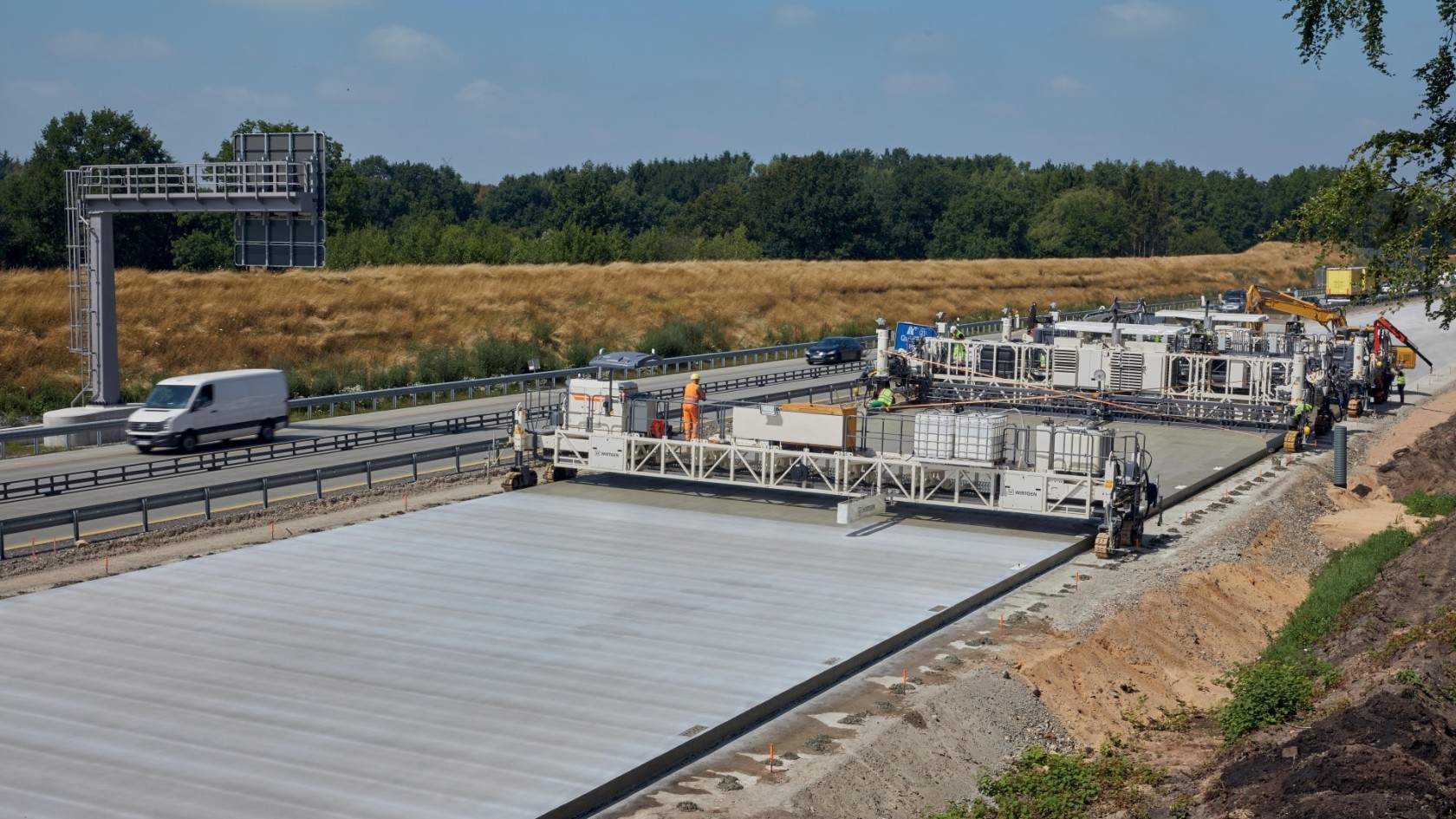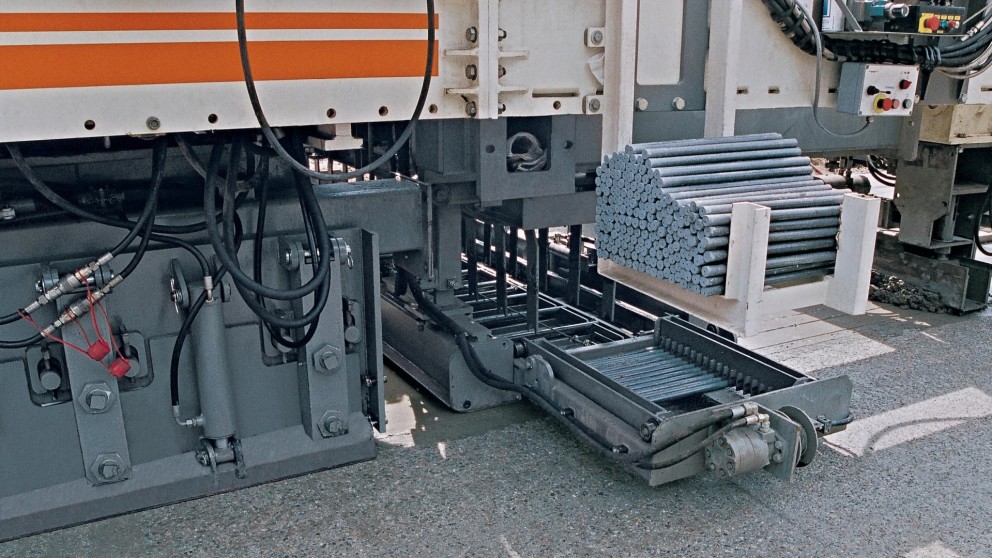Inset Concrete Paving


The following sequence of operations is typical of inset paving: First of all, trucks unload the concrete in front of the machine.
The slipform paver then spreads the concrete over the full paving width with its spreading auger or spreading plow and forms the concrete profile for the roadway with the slipform mold. HF vibrators inside the slipform vibrate at high frequency, expelling air from the concrete and thereby compacting it.
The slipform paver always remains in motion during the paving operation, its working speed ranging from 1 to 2 meters per minute. At the same time, the paver can also insert dowels or tie-bars in the fresh concrete, which serve as reinforcement. Contraction joints are later cut into the concrete pavement above the reinforcements, as they ensure that the cracks which are invariably produced as a result of stresses and temperature fluctuations are diverted into the concrete pavement in a controlled manner.
Automatically inserted dowel bars transfer loads from one concrete slab to another.
The road surface is leveled using finishing beams and super-smoothers. A burlap drag is often pulled over the surface to create a non-skid texture. A texture curing machine is usually used to apply a dispersion to the fresh concrete to ensure it cures evenly.
When paving asphalt, the road paver always sets the pace. After all, its performance determines, for instance, how many asphalt mixing plants are engaged, how many trucks are needed to transport the mix to the job site, and how many rollers are needed for final compaction.
Click here for more information on asphalt paving with road pavers from VÖGELE.
View Asphalt Paving